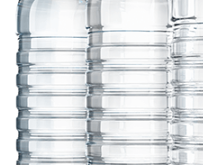Today, synthetic food additives play a huge role in enhancing the color, flavor, and shelf life of various products.
Red Number 40, also known as Allura Red AC, stands out as one of the most used food colorings worldwide.
Behind its bright color lies a growing body of research raising concerns about its potential health risks.
History and Usage of Red Number 40

Red Number 40, a synthetic azo dye, was first synthesized in the early 20th century and gained popularity as a food coloring agent due to its stability and vibrant red hue.
Since then, it has become a staple in a wide range of food and beverage products, including candies, sodas, snacks, and processed foods.
Its extensive usage is attributed to its affordability, versatility, and ability to enhance the visual appeal of products on the market.
Chemical Composition and Potential Health Risks
Studies have linked this synthetic dye to various adverse health effects, including hyperactivity in children, allergic reactions, and carcinogenicity.
Research indicates that Red Number 40 may exacerbate symptoms of attention deficit hyperactivity disorder (ADHD) in susceptible individuals, leading to behavioral disturbances and impaired cognitive function.
Animal studies have raised concerns about the carcinogenic potential of Red Number 40, with findings suggesting an association with tumor development, particularly in the gastrointestinal tract.
While further research is needed to establish conclusive evidence in humans, these preliminary findings underscore the importance of exercising caution regarding its consumption.
Here are some negative health effects associated with Red Dye #40:

Allergic reactions: Some individuals may experience allergic reactions to Red Dye #40, which can manifest as hives, itching, or swelling.
Hyperactivity: There is evidence to suggest that artificial food dyes, including Red Dye #40, may contribute to hyperactivity and behavioral issues in children.
Asthma: Red Dye #40 has been linked to exacerbating symptoms in individuals with asthma.
Migraines: Some people report experiencing migraines or headaches after consuming products containing Red Dye #40.
Carcinogenicity: Research suggests that Red Dye #40 has carcinogenic properties, potentially increasing the risk of cancer.
Neurological effects: Studies have indicated a possible link between Red Dye #40 and neurological disorders.
Gastrointestinal issues: Red Dye #40 causes digestive problems in some individuals, such as nausea, vomiting, or diarrhea.
Controversies and Debates
While some studies have reported adverse health effects associated with its consumption, industry-funded research often presents conflicting findings, emphasizing its safety within regulatory limits.
This discrepancy highlights the need for independent, peer-reviewed studies to elucidate the true extent of its potential risks.
Regulatory Landscape and Labeling
In the United States, the Food and Drug Administration (FDA) regulates the use of food additives, including Red Number 40, and sets permissible limits for their usage in various food products.
In both Europe and the UK, products containing Red No. 40 must be labeled with the words” [this item] may have an adverse effect on activity and attention in children.”
No such warning label is found on American products.
Alternatives and Consumer Choices
It’s important to carefully read product labels and ingredient lists to identify the presence of Red Number 40
You should seek natural alternatives to Red Number 40 and other synthetic dyes.
Food manufacturers are responding to this demand by offering products that utilize natural food colorings derived from fruits, vegetables, and other plant sources.
Look for products labeled as free from synthetic dyes; you can mitigate exposure to potentially harmful additives while supporting a shift towards cleaner, more transparent food production practices.
Red Number 40 food coloring, despite its widespread use and regulatory approval, poses hidden dangers that warrant attention and scrutiny.
Common products containing high levels of Red Number 40 food coloring include:
1 – Beverages: Carbonated drinks, fruit-flavored sodas, sports drinks, and fruit punches often contain significant amounts of Red Number 40 to enhance their vibrant color.
2 – Candy and Confectionery: Various candies such as gummy bears, fruit chews, jelly beans, and licorice often contain Red Number 40 to achieve bright and appealing colors.
3 – Processed Snacks: Snack foods like flavored chips, crackers, popcorn, and snack bars may contain Red Number 40 to enhance their visual appeal.
4 – Desserts and Baked Goods: Many desserts like cakes, cupcakes, cookies, icing, and frostings, as well as baked goods like pastries and doughnuts, may contain Red Number 40 for coloring purposes.
5 – Breakfast Cereals: Some brightly colored breakfast cereals, particularly those marketed towards children, may contain Red Number 40 to make them visually appealing.
6 – Condiments and Sauces: Certain condiments and sauces, including barbecue sauce, ketchup, and salad dressings, may contain Red Number 40 to enhance their color.
7 – Medications: Some over the counter and prescription medications, particularly liquid formulations such as cough syrups and liquid antibiotics, may contain Red Number 40 as a coloring agent.
8 – Cosmetics and Personal Care Products: Red Number 40 may also be found in various cosmetics and personal care products such as lipsticks, lip glosses, bath products, and hair dyes to achieve desired shades.
 Growing Younger Everyday What Works For Me
Growing Younger Everyday What Works For Me





